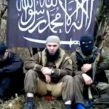
Militants Who Fought in Syria Accused of Killing Five Hunters in Dagestan
Publication: Eurasia Daily Monitor Volume: 12 Issue: 178
By:

Russia’s security services recently launched a special operation across Dagestan, the largest republic of the North Caucasus. Combined forces from the military, police and security services specifically targeted five Dagestani districts—Kurakhsky, Magaramkentsky, Suleiman-Stalsky, Tabasaransky and Khivsky. The special feature of the latest special operation is that it practically covers the entire foothills of the republic, from Makhachkala in the north to southern Dagestan. The action was prompted by the murder of five hunters, who were allegedly shot by militants in the forests of the Suleiman-Stalsky district. According to police, the hunters may have been killed for cooperating with the authorities (Vesti.ru, September 20). Some people suggested that the slain individuals were government agents, not hunters, but that is unlikely.
According to relatives of two men from the village of Khtun who were killed, five men from the village went hunting on September 17 but only three returned two days later, and they did not know what happened to the other two. This led to a search by villagers and police, during which they found the bodies of three residents of the village of Gazelkent and then found the bodies of their two fellow villagers in the same area. All of the victims were in their 30s (Interfax, September 20).
According to investigators, an insurgent hideout was within 100 meters of the spot where the victims’ bodies were found (Topnews.ru, September 20). The investigators suggested that the hunters stumbled across the militants’ hideout and were killed. It is unclear how the two groups of hunters from two different villages turned up at the same spot in the forest. All of the slain individuals had been shot in the head and their hands were tied up. The hunters’ guns were not found; those who killed them presumably also took their weapons.
The murder of five young people led to hostility toward the militants on the part of local residents, who suspected members of the insurgency were the killers. The authorities repeatedly noted the proximity of the rebels’ hideout to the spot where the villagers were killed. Tensions in the village of Khtun grew after investigators stated that the villagers who had joined the insurgency had killed fellow villagers. Eventually, the locals planned to stage a protest rally in the village of Kasumkent, which is the administrative center of Suleiman-Stalsky district, but the authorities did not permit them to hold it. Instead, they were invited to an open session of the local antiterrorist commission (Ekhokavkaza.com, September 25). Police, security service and Dagestani government officials met the relatives of the slain hunters and convinced them to drop their plans to hold a protest. Authorities are apparently as frightened of public protests as they are of rebel actions.
The murder of hunters is not a new phenomenon in the Suleiman-Stalsky district or in Dagestan as a whole (Kavkazpress.ru, September 24). Suleiman-Stalsky district is one of the most volatile areas in Dagestan. The novelty in this incident is the identities of the suspects. According to investigators, the attack was carried out by four residents of the village of Khtun who are members of the Southern Sector of Velayat Dagestan under the command of Amir Yasin. Most importantly, three out of four of the suspects reportedly fought in Syria in the ranks of the rebels trying to oust President Bashar al-Assad (Lifenews.ru, September 21). It appears that former Caucasus Emirate fighters who were fighting in Syria are starting to return home. If three residents of a village managed to evade the defenses of the Russian police and security services, then it is hard to imagine how many rebels have managed to return to Russia from the Middle East.
During the past ten months since the North Caucasian rebels took an oath of allegiance to the Islamic State (IS), the militants have not staged any significant attacks on behalf of the IS. But there has been a growing number of news reports about members of this organization being killed by government forces. Indeed, news reports about government operations against Islamic State supporters comprise the main evidence of the latter’s presence in the North Caucasus (Mk.ru, September 20).
The motivation behind the killing of the hunters in Suleiman-Stalsky district remains unclear. If the rebels were afraid the hunters would disclose the location of their hideout, there was no rationale for killing them and then abandoning the base anyway. The insurgents probably suspected the hunters of having ties to the security services, which resulted in the cold-blooded killing of the five young men.
The killing of hunters is unlikely to help the IS gain support among residents of the Suleiman-Stalsky district or across Dagestan. Moreover, the attack should be seen as an act of desperation on the rebels’ part, not a sign of their strength. Still, the infiltration of militants from Syria to the North Caucasus is a worrisome sign that could lead to the revitalization of the armed Islamic underground movement in the North Caucasus and increase the region’s volatility.




